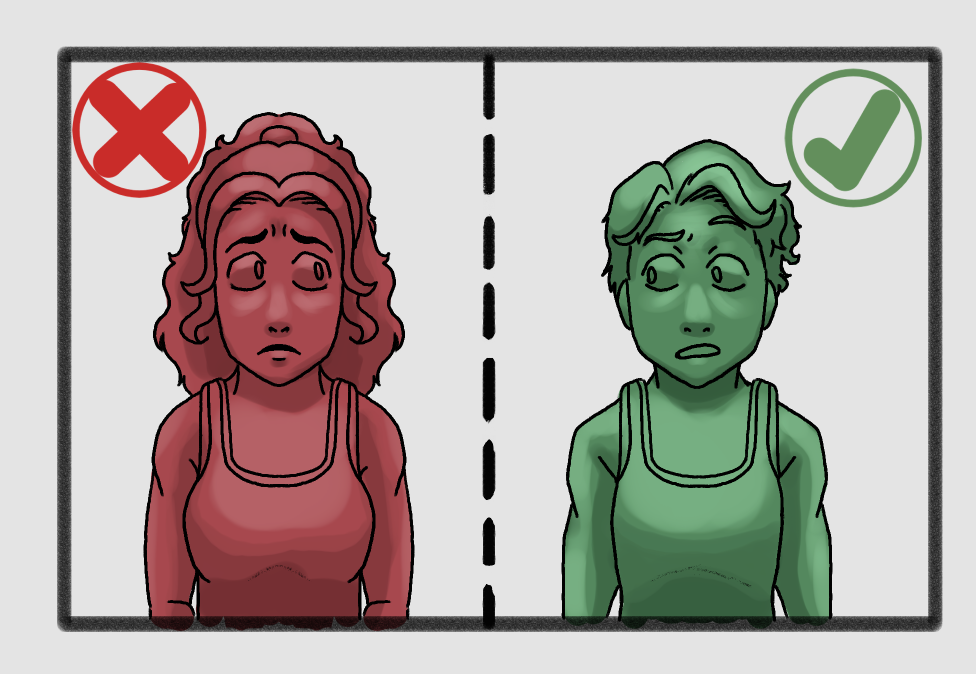Addison Trail and District 88 have consistently demonstrated care for upholding positive traditions and amending or eradicating those which are no longer beneficial to our school given the current situation.
Today, we are incredibly grateful to say that they are working to demonstrate this same principle as they look over our dress code. This messy, abstract list of bendable rules seems as though it was merely thrown together and then deemed ‘good enough’ to pass for some sort of basic guideline.
The dress code debacle isn’t something that only a small group has a problem with. Faculty, parents, and students alike have all reported a need for change.
The first section of the dress code is as follows.
“The primary purpose of the school is education and matters of personal dress and grooming must be appropriate to the situation. Thus, the responsibility for implementing the rules and regulations which the Board of Education expects every student to observe is delegated to the principal who has the authority to make discretionary judgments regarding the appropriateness of student dress, and to take corrective and/or disciplinary action as necessary. Students shall wear appropriate clothing and footwear and groom themselves for school in a manner that does not offend the rules of decency or reflect negatively on, or detract from any phase of the educational program. Requirements of certain areas of the school program may necessitate further restrictions of dress and grooming.”
The vagueness of this paragraph creates a huge issue. The school tells us not to offend the rules of decency. But what is decency?
The dictionary tells us that decency is “behavior that conforms to accepted standards of morality or respectability.”
Okay, but what are these standards?
The problem here is that decency isn’t a concrete concept. One person might consider wearing sweatpants to school indecent because its informal while another may drive indecency as far as to mean merely not covering inappropriate areas of the body. As a school and as a district, it is necessary that decency isn’t left up to the discretion of each individual faculty member. What does Addison Trail define as decency? This is something that needs to be discussed rather than a term thrown in the handbook in an effort to prevent inappropriate dress. It is nearly impossible to decide whether clothing is appropriate given this vague language. One person’s idea of decency should not be the determining factor of whether a student is sent home, rather the combined ideas of the Dupage 88 administration.
This brings us to our second problem with this part of the dress code. The code states that the principal has the authority to make the final judgement call on whether a student is dressed appropriately for school.
While our principal is a wonderful man and we do not feel he is the type to call out students unnecessarily, having this piece in the dress code simply places too much power in the principal’s hands. The lack of restrictions to couple this statement reflects that a principal has the power to declare any given outfit inappropriate at any time with no justification as to why.
One principal can not speak for the entire realm of a complex problem. One principal can not possibly take into consideration every factor in such a situation, including dress trends and modern fashion for both men and women.
Speaking of women’s fashion, another problem with the dress code is the way it is unintentionally biased against us.
The dress code in place includes these items in the list of what it considers unacceptable:
See-through clothing, tight clothing, excessively short clothing, midriff tops, halter tops, strapless tops, backless tops, tops revealing-exposed cleavage, visible undergarments, pants that fit below the waist, potentially dangerous jewelry, jewelry excessive in size and length, and extremes in hairstyles or make-up.
Nearly all of these, if not all of these, seem to be targeting garments that are predominantly worn by female students. The reasoning isn’t that female students chose to dress in a more inappropriate manner than male students, rather that these are the clothing choices a 2021 society provides women with.
While years ago this dress code language would have barred students from wearing clothes that society considered excessive or extreme, this now bars young women from wearing “normal” clothing that is in style.
We would encourage those who think this to be an exaggeration to take a look into a clothing store designed for young women.
Finding a top that isn’t cropped, mesh, tight, or lacking straps that doesn’t look like it belongs in the previous century or a pair of jeans that doesn’t look like it went through a shredder is a needle in a haystack in the current era of fashion.
And while we aren’t saying we love the current styles, how can we deem that the entirety of modern fashion for women only is inappropriate for school?
As students, we are not given the option to come to school. It is not a formal event that we are invited to or even a job that we have chosen to accept. We have to be here. Why should young women in our school be forced to go out of their way to find clothes for a daily event they do not have the option of attending?
A recent situation that exemplified this was senior picture day. Many girls with dresses that were not strikingly revealing and did not clearly violate any obvious lines of appropriateness were sent away or forced to wear something else. Some girls were even sent away merely because their full coverage, non strapless, completely in line with what is deemed appropriate and femininely formal dress was deemed inappropriate by a photographer because of the thickness of the straps.
Something as important to a teenage girl as her senior portrait should not be ruined because one photographer’s definition of decency determined her dress needed straps a miniscule amount more thick. It is ridiculous that boys with sagging pants are not questioned while girls dressed formally for a formal picture are sent away.
It is time to stop rationalizing banning clothes in the name of past societal deemings of appropriateness for women. If the dress code does not permit students to wear clothes that are widely considered acceptable and therefore found in clothing stores, it is time for the administration to combine numerous ideas into clear, concise, rules and limits.


